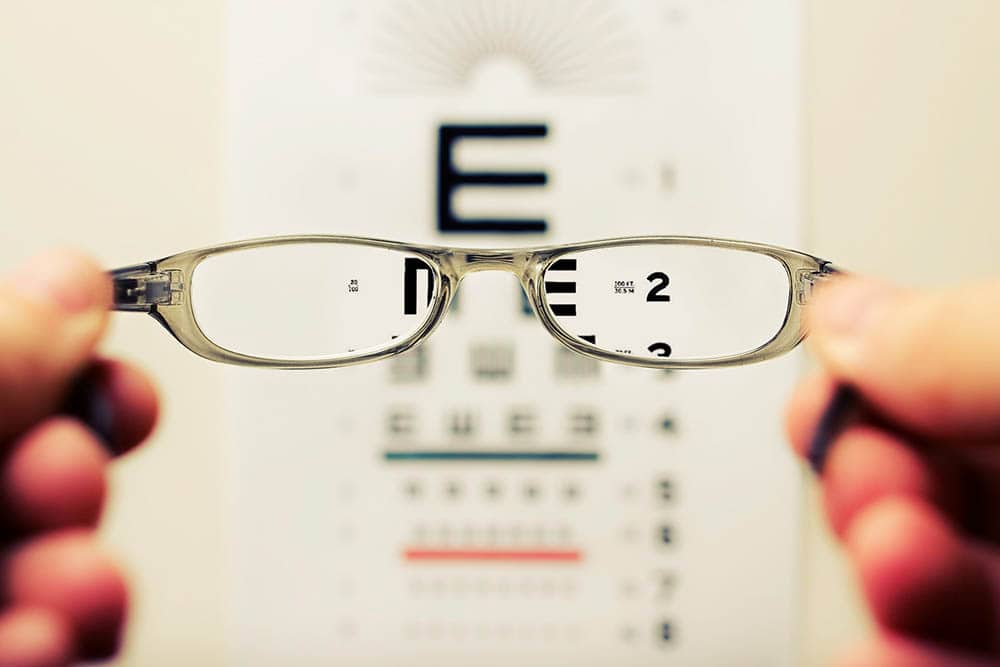Can You Wear Reading Glasses All Day? What You Need to Know!
Last Updated on

When many people get older, they might require reading glasses. These come in many different styles and can be quite fashionable.
But putting them on and taking them off repeatedly can get tiresome. So, can you wear reading glasses all day? The short answer is that it isn’t necessarily a good idea. Wearing reading glasses all day won’t hurt your vision, but it can be uncomfortable.
Here, we take an in-depth look into reading glasses and hopefully address a few questions that you might have.

Why Do Some People Need Reading Glasses?
Most of us don’t typically need reading glasses until later in life. As we get older, we get presbyopia, which is just a fancy word for the way that the eyes change as we age and lose the ability to focus on objects up close.
Presbyopia can start in our 40s and will get progressively worse until we are about 65. The lens in our eyes starts to lose its elasticity, which is what leads to the inability to focus properly.

Who Should Be Using Reading Glasses?
Chances are if you’re over the age of 40, you might start to notice that it’s harder to read fine print. Overall, if you are having trouble focusing on anything up close, whether you are over 40 or not, you could probably benefit from reading glasses.
- You experience eye strain or headaches while doing close-up work.
- Your vision is blurry when reading from a standard distance.
- You find that you need to hold reading material farther away from your eyes than usual (at arm’s length).
If you suspect that you might have presbyopia, a visit to an optometrist is in order. They can confirm the condition and set you up with the right prescription for reading glasses.
Can You Wear Reading Glasses All Day?
Wearing reading glasses all day doesn’t cause any serious problems, but this is truer for people who have weak prescriptions. In fact, if your prescription is low, the glasses might help bring everything into clearer focus for you.
But it’s not a good idea if you have a strong prescription. While they won’t damage your eyes, they could cause a headache when you are using your eyes for distance purposes, such as playing sports or driving.
Reading glasses should only be used for reading books, laptops, phones, notebooks, or anything else that requires concentration up close.

What Are the Options?
If you have a strong prescription but want to wear your reading glasses more often, you can opt for bifocals, trifocals, or progressives.
- Bifocals are essentially two lenses combined. The top lens is for distance and the bottom is for up close. Many of these glasses have a defined line to separate the two lenses. They are available in both glasses and contact lenses.
- Trifocals have three separate lenses in one. They enable you to see up close, middle distance, and far away. Like bifocals, they can have lines to separate them on the lens. They are also available as progressive lenses.
- Progressivesdo not have lines to separate the different lenses and instead use a gradual transition between the two or three prescriptions.
- Readersare often found at the drugstore. They are cheap and don’t need a prescription to purchase and use.
- Contact lenses can be used but this is trickier. They are available as multifocal lensesand monovision. Monovision contacts have one lens for seeing in the distance, and the other lens is for close-up purposes.
- KAMRA Inlay is a surgical procedure that works like the monovision contact lens, but the lens is implanted in one eye in the cornea.
Adjusting to Bifocals and Progressives
It can take a week or two before using bifocals becomes second nature, but it might take longer for some people.
You might have headaches, nausea, blurry vision, issues with balance, or the sensation that objects are moving or jumping around. These glasses might also mess with your perception of depth when looking down, so you might find yourself tripping and stumbling, particularly on stairs.
When your eyes move from the bottom of the lens to the top, it can confuse your eyes and brain, making you feel dizzy and unsteady.
Here are a few tips to help you adjust:
- Start by building up your tolerance to the new glasses. Put them on in the morning and wear them for about an hour. The following day, try it for 2 hours. This way, you gradually become accustomed to the glasses.
- Ensure that your glasses are correctly adjusted to fit you. If they feel lopsided or slide down your nose, take them back to where you bought them and have them professionally adjusted to fit.
- Try moving the book or paper as you read rather than your head or eyes.
- Hold the item down and approximately 16 inches away from your eyes. Only use the bottom of your lenses to read.
- While walking, look straight ahead and avoid looking at your feet.
- See your eye doctor if you just can’t seem to get used to your new glasses.

Reading Glasses Tips
As we get older, we might have memory issues, which can include forgetting where we put our glasses. It gets even more confusing if you’re nearsighted because you have to wear glasses for distances and then swap them for reading glasses to read something.
So, here are a few tips to help you on your reading glasses journey:
- Don’t put them on top of your head: This stretches out the arms. Consider purchasing a cord that you can attach to the glasses and wear around your neck. Cords are available in all kinds of materials and colors.
- Take them off when you turn out the light:If you enjoy reading in bed, remember to take them off before you fall asleep. Damage is the potential outcome otherwise.
- Always use both hands to take them off and on:Many of us tend to take off our glasses and put them on with one hand. After a while, this can damage the frames.
- Invest in more than one pair:This may depend on how much they cost, but it can be convenient to have a pair at work, one in the bedroom, and another in the living room. This way, you’ll always have a backup pair in case you lose one.
- Store them properly:Try to keep them in an eyeglass case and away from heat sources, which can damage the frames.
- Microfiber is your friend:Try not to clean them with your shirt. You might scratch the lenses, so invest in microfiber cleaning cloths.

Conclusion
Wearing reading glasses won’t make your vision worse; your age and genetics will slowly do that job. If you’ve been spending 1 hour of your time staring at a screen, try taking a break for 5 minutes.
If you truly dislike the frames of the reading glasses at your local optician, try online shopping. There are a ton of choices in different styles, colors, and patterns, which might even make wearing reading glasses more enjoyable.
Featured Image Credit: David Travis, Unsplash
About the Author Kathryn Copeland
Kathryn was a librarian in a previous lifetime and is currently a writer about all things birds. When she was a child, thanks to her love of animals she hoped to work in zoos or with wildlife in some way. She's not strong in the sciences, unfortunately, so she uses her time to research and write about all kinds of birds and animals, and hopes to bring that detailed knowledge to OpticsMag.
Related Articles:
Can You Use Binoculars to Look At Stars? How to Choose the Right Pair
How to Clean a Refractor Telescope: Step-by-Step Guide
How to Clean a Telescope Eyepiece: Step-by-Step Guide
How to Clean a Rifle Scope: 8 Expert Tips
Monocular vs Telescope: Differences Explained (With Pictures)
What Is a Monocular Used For? 8 Common Functions
How to Clean a Telescope Mirror: 8 Expert Tips
Brightfield vs Phase Contrast Microscopy: The Differences Explained
